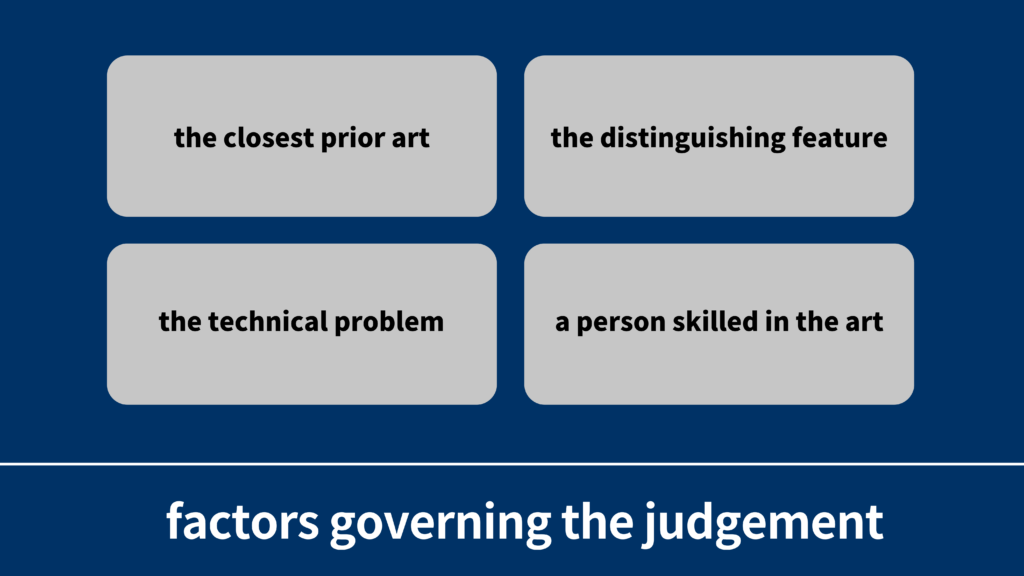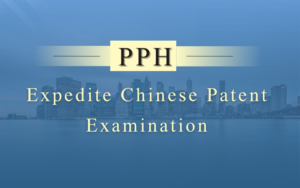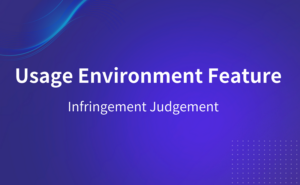Obviousness Rejection for Patents in China
During the substantive examination of invention patents in China, the claimed invention may receive an Obviousness rejection. In other words, the invention may be regarded that it does not involve an inventive step by the examiner because it is obvious as compared with the prior art.
When the technical solution of the claim is commented as “obvious” by the examiner, the claimed invention lacks inventiveness. As indicated below, the paragraph often appears in the office action.
“Therefore, those technical solutions to be protected by Claim 1 are obvious to a person skilled in the art, because these solutions are obtained based on the Reference Document 1 and customary technical means in the art. Claim 1 has no prominent substantive features and notable progress, and therefore is not in conformity with the provision of Article 22 of the Patent Law concerning inventiveness.”
How to determine whether it is obvious

According to Section 3.2.1.1, Chapter 4, Part II of the Examination Guidelines, the examiner usually follows the three steps to determine whether a claimed invention is obvious as compared with the prior art.
1. Determining the closest prior art
The closest prior art refers to a technical solution in the prior art that is the most closely related to the claimed invention, which shall be the basis for determining whether or not the claimed invention has prominent substantive features.
The closest prior art may, for example, be an existing technology in the same technical field as the claimed invention, and its technical problem to be solved, technical effects. or intended use are the closest to the claimed invention, and/or has disclosed the greatest number of technical features of the claimed invention; or be an existing technology which, despite being in a different technical field from the claimed invention, is capable of performing the function of the invention and has disclosed the greatest number of technical features of the invention. It should be noted that, when determining the closest prior art, account shall be first taken of the prior art in the same or similar technical fields.
2. Determining the distinguishing features of the invention and the technical problem solved by the invention
During examination, the examiner shall first determine the distinguishing features of the claimed invention as compared with the closest prior art and then determine the technical problem that is actually solved by the invention on the basis of the technical effect of the distinguishing features. The technical problem actually solved by the invention, in this sense, means the technical task in improving the closest prior art to achieve a better technical effect.
3. Determining whether or not the claimed invention is obvious to a person skilled in the art
At this step, the examiner shall make a judgment, starting from the closest prior art and the technical problem actually solved by the invention, as to whether or not the claimed invention is obvious to a person skilled in the art. In the course of judgment, what is to be determined is whether or not there exists such a technical motivation in the prior art as to apply said distinguishing features to the closest prior art in solving the existing technical problem (that is, the technical problem actually solved by the invention), where such motivation would prompt a person skilled in the art, when confronted with the technical problem, to improve the closest prior art and thus reach the claimed invention. If there exists such a technical motivation in the prior art, the invention is obvious and thus fails to have prominent substantive features.
How to respond when confronted with Obviousness Rejection
When confronted with Obviousness Rejection for patents in China, the common response strategy is to make a superficial defense based on the office action.
For example, if the office action points out that “the distinguishing technical features are disclosed by the reference document”, then the applicant can analyze the differences in distinguishing technical features between the reference document and the claimed invention.
In addition to the common response strategy, we can also start from the following special perspectives.
1. To take technical solutions as a complete distinguishing technical feature
According to Section 3.2.1.1 (2), Chapter 4, Part II of the Examination Guidelines, if technical features functionally support each other and are with functional interaction between them, they shall be considered as a complete distinguishing technical feature.
Therefore, when confronted office actions concerning Obviousness, the applicant can argue that these technical features are inseparable and that they should be taken as a complete distinguishing technical feature to solve the technical problem actually solved by the invention and achieve the technical effect actually achieved by the invention.
Furthermore, the applicant may request the examiner to prove that there exists such a technical motivation that is from the complete distinguishing technical feature. If there does not exist such a technical motivation, the distinguishing technical feature is non-obvious.
2. To tie the distinguishing technical feature and the technical problem actually solved closely
According to Section 3.2.1.1 (3), Chapter 4, Part II of the Examination Guidelines, the distinguishing technical feature, used for solving the technical problems actually solved by the invention, holds the key to the judgement whether the claimed invention is obvious to a person skilled in the art.
Hence, even if the said distinguished technical feature belongs to prior art (including common knowledge) indeed, it may still be non-obvious when the prior art (or common knowledge) is not used to solve the technical problem actually solved by the invention, or those skilled in the art have no motivation to use the prior art (or common knowledge) to solve the technical problem actually solved by the invention.
3. To argue based on other provisions
In addition to Section 3.2.1.1, Chapter 4, Part II of the Examination Guidelines, Section 4.10.2.2 (4) and Section 5.3, Chapter 8, Part II of the Guidelines are also related to Obviousness.
Section 4.10.2.2 (4), Chapter 8, Part II of the Examination Guidelines stipulates that “The common knowledge of the art cited in the Office Action by the examiner shall be accurate. Where the applicant has objections to the common knowledge cited by the examiner, the examiner shall state the reasons or provide corresponding evidence for proof.”
Therefore, in an office action, if the examiner considers the technical features which make contributions to solve the technical problem as the common knowledge, he shall provide corresponding evidence for proof. If there is no such evidence, it is non-obvious.
Section 5.3, Chapter 4, Part II of the Examination Guidelines stipulates that “An invention produces an unexpected technical effect means that as compared with the prior art, the technical effect of the invention represents a “qualitative” change, that is, new performance; or represents a “quantitative” change which is unexpected. Such a qualitative or quantitative change cannot be expected or inferred by the person skilled in the art in advance. If an invention produces an unexpected effect, it means the invention represents notable progress on the one hand, and it also means that the technical solution of the invention is non-obvious and thus has prominent substantive features on the other hand. Therefore, the invention involves an inventive step.”
Conclusion
The above is a brief introduction on the obviousness rejection for patents in China. When confronted with it, we do recommend you to make wise use of strategies we provide based on the provisions of the Patent Law and the Guideline. However, if you simply parade the provisions when responding to the rejection concerning the obviousness and you do not take into consideration the reality on the ground, your response may be rather farfetched.

